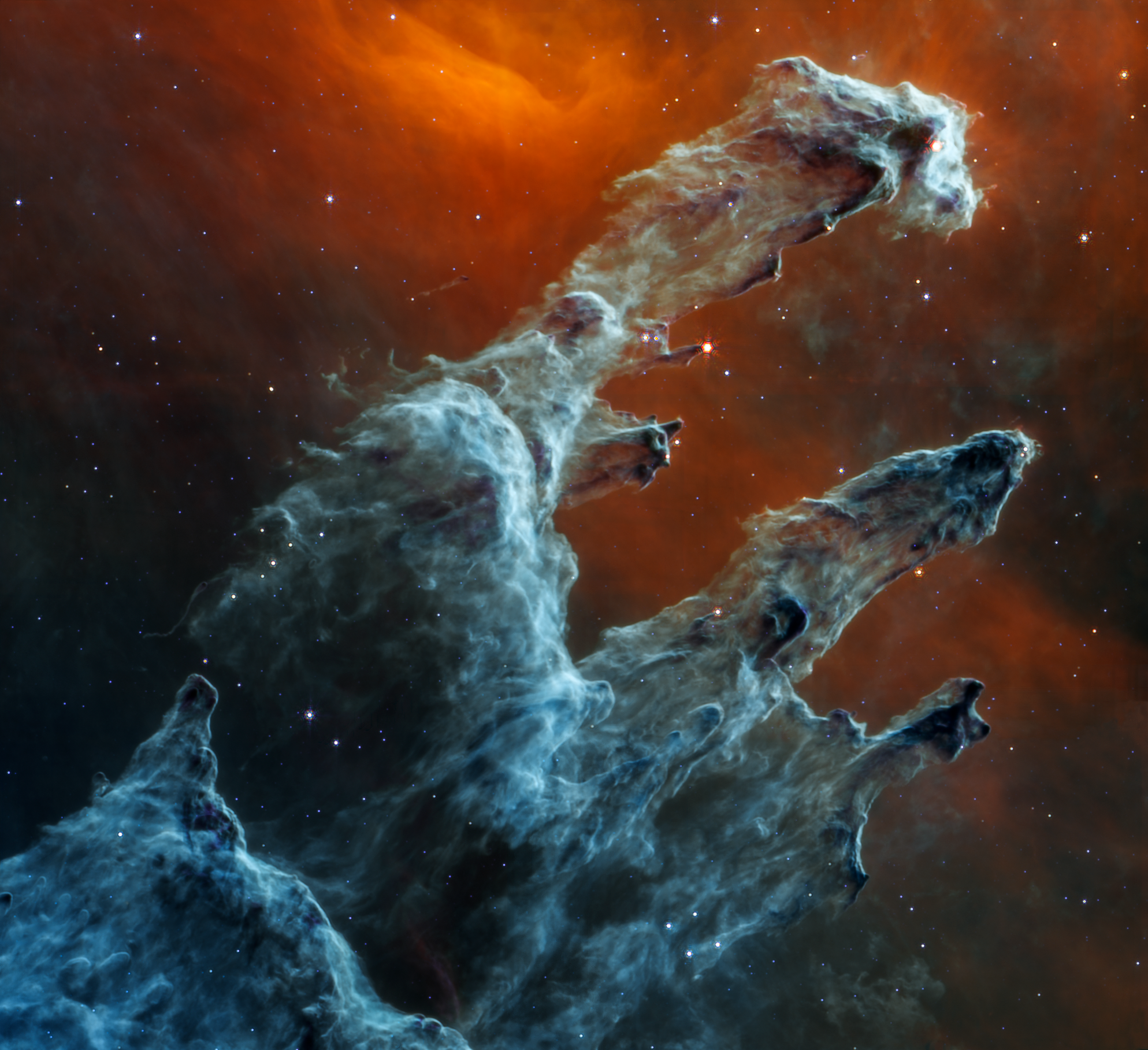Visualizing Science

The Pillars of Creation, originally imaged by Hubble, is one of those pictures that fired my imagination as a kid. Now, this image, detected by the James Webb Telescopes Mid-Infrared Instrument, offers a new view of the iconic structure:
Although the stars appear missing, they aren’t. Stars typically do not emit much mid-infrared light. Instead, they are easiest to detect in ultraviolet, visible, and near-infrared light. In this MIRI view, two types of stars can be identified. The stars at the end of the thick, dusty pillars have recently eroded the material surrounding them. They show up in red because their atmospheres are still enshrouded in cloaks of dust. In contrast, blue tones indicate stars that are older and have shed most of their gas and dust."
More:
- Here's the image I've always associated with the Pillars of Creation.
- This image is also strikingly different from the image taken by Webb's Near-Infrared camera.
- These stunning pictures only exist because dedicated science visuals editors take the original black and white images and, in collaboration with scientists, turn them into color composites a lay public can appreciate at a glance: How Are Webb’s Full-Color Images Made?
The Real People Behind China’s Virtual Idols
By Gong Xin. Sixth Tone.
I’d heard of virtual idols, though I don't follow any, and I assumed this style of avatar was used by people who wanted to protect their anonymity while interacting with a digital audience. I hadn’t considered how agencies might exploit this anonymity (though I’m not surprised), and it’s heartening to hear that audiences care enough about the operators behind these “idols” to identify their idiosyncrasies and take action when operators are abused.
“Ironically, by the time A-SOUL debuted, the house was already falling around Kizuna AI. Under pressure from investors to rapidly expand the idol’s income streams, her operator hired four new zhongzhi ren while marginalizing the original performer. Upon learning the truth, her fans revolted. Their anger points to a fundamental contradiction in the VTuber industry. For companies, the shell is the star; the human artists who bring the idols to life are meant to be expendable and easily replaced. To fans, however, the performer is their idol’s soul. They, and not just the anime skin, are the real object of fans’ affections.”
VIDEO: How to Terraform Venus (Quickly)
The "quickly" in this video is relative and the project requires future tech with development timelines minimized by some handwaving, but it's still a fun look at a future potentially realized with some technologies available in the near term, like skyhooks, mass drivers, and space mirrors.
"When it comes to terraforming other planets, the planet that gets the most attention is Mars—a small, toxic, and energy poor planet that just about seems good enough for a colony of depressed humans huddled in underground cities. ... [But] what if we take Venus, one of the most hostile and deadly places in the solar system and turn it into a colony?”